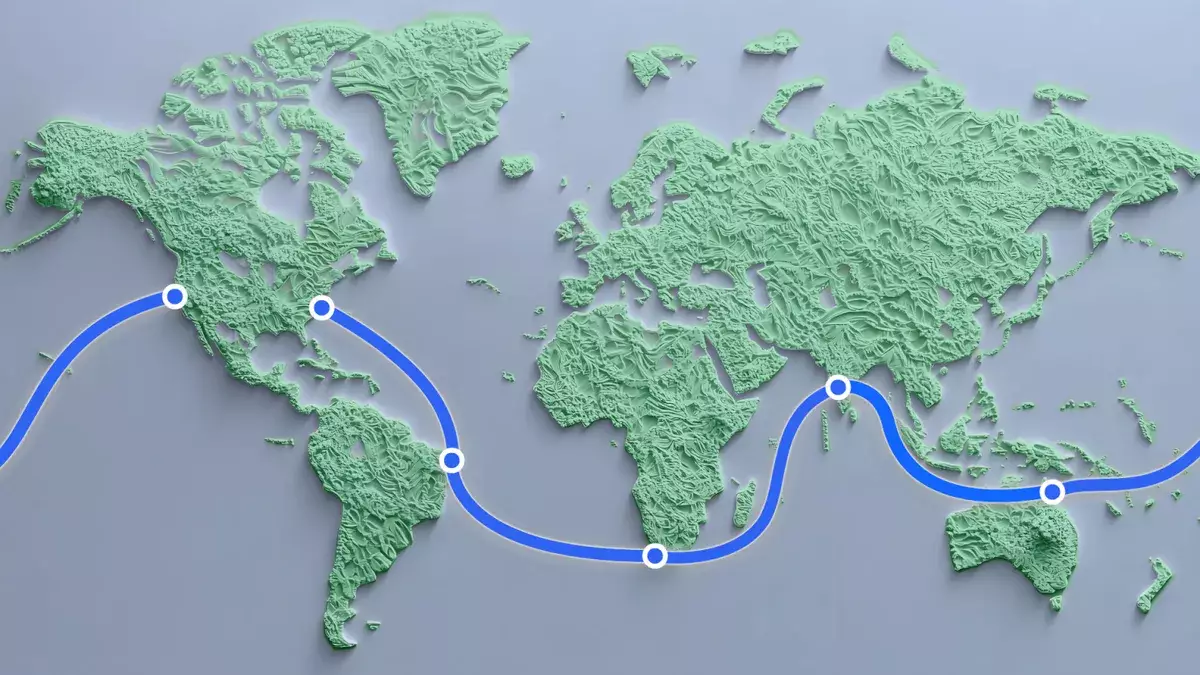In a world increasingly driven by wireless technology, it is a stark reminder of our digital age to recognize the vast and often unseen physical frameworks that support it. As we journey into a technologically advanced 2025, the majority of internet traffic—an astonishing 98%—still depends on miles of undersea cables. Among these infrastructure initiatives, one project stands out for its sheer scale and ambition: Meta’s Project Waterworth. This venture aims to create an undersea internet cable longer than the Earth’s circumference and capable of connecting multiple continents, reshaping our global digital landscape.
Envisioned to encompass approximately 31,000 miles (or around 50,000 kilometers), Project Waterworth will weave an intricate tapestry of connectivity, linking the United States, South Africa, Brazil, India, and Australia. The engineering behind such an endeavor is both fascinating and complex, as the cable will not simply cut across the ocean’s surface. Instead, it will take a careful path: originating from the U.S. eastern coastline, it will carve its way down to Brazil, traverse the vast Atlantic, and navigate around the southern coast of Africa before reaching Mumbai, India. The final leg of the journey will bring it back to the U.S. via Queensland, Australia.
What stands out in this project is its commitment to depth and resilience. Meta plans to lay the cable up to four miles below the ocean’s surface, entering a realm where few have ventured. This depth is significant, as it not only minimizes the risk of damage from ship anchors but also employs advanced burial techniques in shallow waters to further secure the cable from potential hazards. By introducing innovative engineering methods, Meta aims to pioneer the laying of the world’s longest cable with 24 fiber pairs, enhancing the overall reliability of these critical digital highways.
Meta’s project reflects a vast, multi-billion dollar investment aimed at reinforcing the global digital infrastructure essential for our interconnected world. As connectivity becomes more crucial for technology advancements, including artificial intelligence, the implications of such a massive project cannot be overstated. According to Meta, these new oceanic corridors will bolster high-speed connections crucial for driving AI innovation across participating regions.
While skeptics may regard Meta’s push into infrastructural investments with caution, especially considering the company’s mixed reputation surrounding privacy and online discourse, the tangible benefits of such undertakings are undeniable. Here lies the contradiction: a company often criticized for its role in perpetuating internet toxicity is simultaneously laying the groundwork for transparent and robust global connectivity.
Nonetheless, Meta’s track record cannot be overlooked. The firm’s public relations have been fraught with challenges, ranging from public outcry over issues related to misinformation to the recent pivot of relying on “community notes” in lieu of traditional fact-checking methods. Although CEO Mark Zuckerberg believes that less stringent moderation may compromise the quality of content management, the emphasis on direct community engagement reflects a mounting awareness of the need for responsible digital governance.
As Project Waterworth stands as a beacon of technological advancement, it also serves as a reminder of the dual position that Meta occupies. The company can innovate on one frontend—creating pathways that enhance global communication—while still grappling with its inherent social responsibilities on another. This juxtaposition raises questions about the company’s direction and how it can reconcile its profit-driven motives with the need for ethical digital spaces.
Project Waterworth encapsulates an essential ambition by Meta to reframe the narrative around its contributions to modern infrastructure while remedying some of the controversies surrounding its operation. This ambitious undersea cable project not only represents a leap in engineering innovation but also challenges the perception of Meta as merely an enabler of online chaos. By establishing a network that promotes reliable and global digital connections, Meta is poised to play a pivotal role in shaping the future of communication, pivoting from its notorious past toward a more constructive legacy.


Leave a Reply